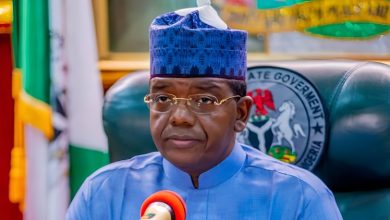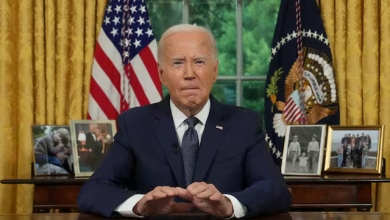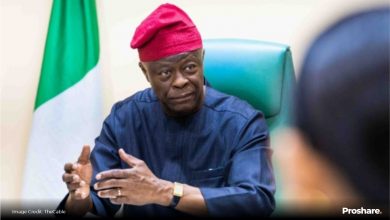UBA IN DANGEROUS SLIDE.

United Bank For Africa Plc , UBA, a tier 1 lender, is ,no doubt , an undisputed industry leader . Even its management takes pride in flaunting the bank as an “Africa’s global brand ’’to boost its corporate prowess .This claim is self-: evident : hefty assets, networks, equity and customers deposits are very much at its disposal. .The bank’s balance sheet ,no doubt , is robust .Its total assets at the end of the third quarter 2020 hit N7.056tr, of which customer loans and advances rose from N2.061tr to NN2.382tr.Within the same period its total liabilities improved to N6.404tr ,the bulk of which as the customer deposits is N5.202tr, while the shareholders funds rose 17.96% up to hit N655.327bn.
But in recent times , the above belief has continued to generate serious reservations. This may not be farfetched. UBA”s performance and competitive position are becoming less inspiring and could not be justified with its loaded potentials. First , the bank is underperforming its peers and the market .For this , some critics and analysts are raising questions and getting less confortatable with the the performance of the self-acclaimed African giant . .The crux of the matter is that a mere possession of resources does not guarantee strategic success without complementing it with strategic capability. To some observers , the strategic capability to translate resource to outdtanding results is essentially missing or not adequately exploited .
They may be right . Unlike in the days of Tony Elumelu, its former CEO ,in the last few years , the signals from the bank are pointing to a different direction and raising questions over its leadership prowess . Also , some analysts believed , UBA is no longer setting the rules of competition, leaving it with the option of merely playing a catch up game among it peers.
The impacts of the above are palpable: declining margins, stagnant growth and falling market share are the signals currently turning this global brand a shadow of its former self . The unorthodox players among its peers have thrown it to the back seat. . GT Bank with the lowest assets among the first tier has continued to post profits consistently more than twice UBA’s for years, Access Bank has overtaken it in every meaningful metric while Zenith Bank Plc remains UBA’s senior partner as the most profitable bank even with little assets gap between them .
The bank’s shareholders are the worst hit by lethargic progress of this bank ; from all indications and most obviously , the shareholders are the badly hit of them . Ordinarily, the shareholders are expected to be satisfied . They require maximum or adequate return on their investments in order to remain invested in the bank and to be willing to continue to provide additional resources as and when needed .But this bank has failed its shareholders .
The problem with the bank remains its inability to dramatically generate earnings and translate its revenue to profit efficiently. It’s current net profit margins of 23 percent .are lower than last year 28.5 percent .By the above margin, the bank generated N23.00 from every N100 revenue achieved compared to N28.50 last year.That raises the question of efficiency against the management.
Furthermore, its earnings power is equally relatively weak . For this it has continued to underperform both the industry and the market .Its 7 day shareholders return is negative at 10.9 % and by this it underperforms both the industry and market with negative returns of 6.4 and 3.6 percent respectively. Also , its one year return at 9.3 percent underperforms both the industry and market with their returns standing at 11.1 and 20.6 percent respectively
In the last five years ,the bank registered 7.5 percent earnings growth per year to underperform both the market and the industry which recorded 12.3 percent and 10.1 percent respectively In the past one year ,UBA’s earning growth was negative at 15 .6 percent when both the industry and market grew 16.3 percent and negative 0.2 percent respectively .The bank’s high ROE at 12.9 percent is considered to be low by analysts while its ROA was 1.1 percent .
Even its potentials for better future earnings and revenue are too cold for comfort . UBA’s earnings is forecasted to grow at 4.8 percent in the next three years based on estimates from analysts. The analysts even appeared less optimistic. According tothem ,’UBA’s earnings growth at 4.8 percent per year by forecast are expected to grow slower than saving rate 14.3 percent . This forecast per year still falls below the market growth rate at 11 percent and industry at 7.2 percent . Moreover, its earnings per year ,though forecast to grow but not significantly just as its revenue of 11.5 percent per year will grow less than 20 percent per year. Its forecasted returns on equity in three years at 14.7 percent is considered low by analysts.
Its less impressive earnings power and valuations indices have continued to render its stock value less competitive .The bank’s stock has been priced low compared to its peers . As at November, 19th 2020 its share was N8.45 compared to N8.85 in January 20,2020 .The bank’s stock price depreciated by 7.7 percent since the beginning of the year , [January 2,2020] from N7.80 to N7. 20 in October ,26, 2020 to underscore analysts and investors’ shaky belief in the growth potential of the bank . This represents a capital loss for some shareholders of the bank .The bank’s uninspiring run has continued to affect its market capitalization .Currently its market capitalization is N297.5 billions where a tier 1 bank’s market capitalization has hit a trillion.
Investors are not fools. Certain underlying fundamentals could be attributed to this development. The bank’s Price Earnings ratio is still underperforming the market at 3.3x compared to the market 6.1x .This is an indication that the stock is undervalued relative to the industry and market averages .
Moreover, its unstable dividend track record did not help the matter ; its Return on Equity ,ROE was 12.1percent compared with the industry 12.3 percent while its Return on Assets was 1.1 percent at par with the industry figure ,. This is considered very low by analysts ; its Return . The bank’s debt to equity too is very high , no wonder its cost to income is among the worst among tier 1 lenders . As at September 2019 its debt stood at 737,941B or 132 8 percent relative an equity of N555,528B ; in March 2020 the ratio of debt to equity was 146.2 percent . This could be outrageous.There is nothing bad about using debts if the results could justify it. However, its results have remained less inspiring and competitive .
Its dividend payments have volatile in the last few years though have increased However ,though its dividend payout of 45 percent are well covered by earnings. But analysts believed its future payout to shareholders may be reduced to 28 percent .
DOWN B4 CONCLUSION However , certain performance and operational indices are equally generating hope of better future performance. .The bank has high level of bad loans but well covered to the tune of 102 percent . Its liabilities are low risk with 87 percent made up of low risk funding ,appropriate level of loan to assets ratio at 33 percent and loan to deposit ratio of 42 percent ;
However, some analysts believe UBA’s PE ratio is in line with its industry average and a good value based on its P E compared to the market index ..CARRY UP UNDER PRICE UBA’s stock price has hovered between N4.4 and N9 .45k in the last one year and N6.10 and N7.40k in the last one month . The bank price to book ratio of 0.4x is in line with the industry average .
The weakling pace of the bank stock, as is the case with most quoted stocks, is indicative of a market wide apathy for capital market assets. It is also a pointer to the fact that the economy is depressed and the propensity to save is rather weak. But more than any other factor, it is an indication that Investors are not too impressed with the bank’s showing in the last few years when profits have been lethargic ; business was so bad that the bank’s gross earnings rose only marginally The problem with UBA is more or less a strategic error of allocating resources across competing areas to generate revenues , but little attentions to creating stretch goals,overcoming constraints through a creative and unending pursuit of better resource leverage .
Its 2020 third quarter results confirm the shaky confidence of investors on the bank’s stock . Profit before tax fell by 8% from N98.233bn to N90.372bn . It was a drop in its tax charge by 20.26% from N16.605bn to N13.24bn, that mitigated the drop in its profit after tax which declined to 5.51% from N81.628bn to N77.132bn. This represented drop in Earnings Per Share to N2.16, as against the previous N2.32 .
A very hard nut difficult for the management to break is the issue of impairment . Impairment loss on loans and receivables in the period under review soared by 72.23% from N6.663bn to N11.476bn, driven primarily by the impairment charge on loans and advances to customers, which dropped to N6.947bn, from N11.183bn.It was followed by the N3.548bn write-off on loans and advances, a significant increase over the N1.31bn of last year; and the N2.697bn impairment charge on off-balance sheet terms, as against the previous N1.903bn reversal.
The same issue troubled the bank in the first half of the ongoing financial year . The prices of its inability to rise to the necessary challenges are not hidden and have started taken toll . UBA’s steady rise in its top-line figures was halted in the first half of 2020. -. Its profit before tax declined significantly by-18.71% while its gross earnings grew slightly by +2.24% in H1 2020.UBA recorded a -18.71%Y-o-Y decline in profit before tax from N70.27bn recorded in H1 2019 to N57.13bn in H1 2020. The Group also recorded a -21.69% Y-o-Y decline in profit after tax. This was as a result of a+22.60%increase recorded in operating expenses, PBT declined despite a+7.01% Y-o-Y uptick in net fee and commission. Total comprehensive income for the period increased by+3.28%, foreign currency revaluation gain grew significantly by +618.8% Y-o-Y while foreign exchange trading income declined by -7.29% Y-o-Y
Not only that . Indication that the results for the first half of the year filed with the Nigerian Stock Exchange (NSE) may not turn out as rosy was the meager increase of gross earnings . . Gross earnings grew by+2.24% Y-o-Y from N293.7bn recorded in the corresponding period of the previous year to N300.3bn recorded in H1 2020..
The amount the bank earned from interest bearing assets in the period, which is a critical determinant of profit, wasequally less impressive . And the amount paid out on these assets which although fell could not play the expected stabilizing effect on net interest income. Interest income grew marginally by +0.34%Y-o-Y while interest expense declined by-8.97%, net fee and commission increased Y-o-Y by+7.01%. foreign exchange revaluation gains grew significantly by+619.8% while foreign exchange trading income declined Y-o-Y by -7.29%
Moreover, its capital adequacy ratio declined significantly to 14.4% in H1 2020 from 29%recorded in H1 2019. UBA recorded its lowest capital adequacy ratio of 14.4% in H1 2020 while it recorded its highest capital adequacy of29.0% in H1 2019The capital adequacy ratio declined significantly to 14.4% in H1 2020 from 29%recorded in H1 2019. UBA recorded its lowest capital adequacy ratio of 14.4% in H1 2020 while it recorded its highest capital adequacy of29.0% in H1 2019.
High cost to income and impairment charges were the two hard nuts which its management find difficult to break . .During the period under review impairment charges were on a steady decline, however, in H1 2020 impairment charges for the Group grew significantly by +150.22%recording the highest growth in impairment charges for the Group. In H1 2019, the Group recorded the highest decline of-53.65%in impairment charges.
Operating cost increased Y-o-Y by +22.6%which drove the significant increase in the cost-to-income ratio for H1 2020. Major drivers of the growth in operating expenses were the donations of the Group and penalties, both grew significantly by +11665% and +6117.8%respectively. The cost-to-income ratio increased Y-o-Y to 67.1% from 60% recorded in H1 2019
. . Its scorecards for the last five years up till first half of the current financial year has turned it a shadow of its former self in terms of this responsibility and confirm the dangerous slides of the Africa’s financial supermarket. In its half year performance, its Return on Average Equity crashed from 30.8 percent in 2015 half year to 14.4 percent in the first half of 2020 ;moreover, this champion turned laggard , has unstable track record of dividend payment Moreover, its capital adequacy ratio also somersaulted from 29 % to 14.4 percent during the same period .
The above facts are not to cast UBA into the dustbin. Every bank faces five constituencies and is expected to meet their needs : the surplus unit from which it borrows or depositors , the deficit units which borrow from the bank ,the shareholders , the regulatory authorities and the community at large, the provider of the environments.Four out the five constituencies above are well served without raising much eyebrow by UBA .,
.






